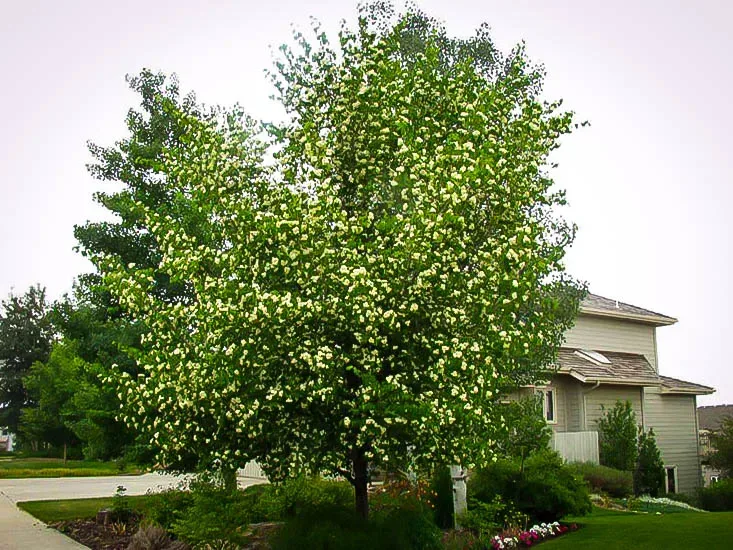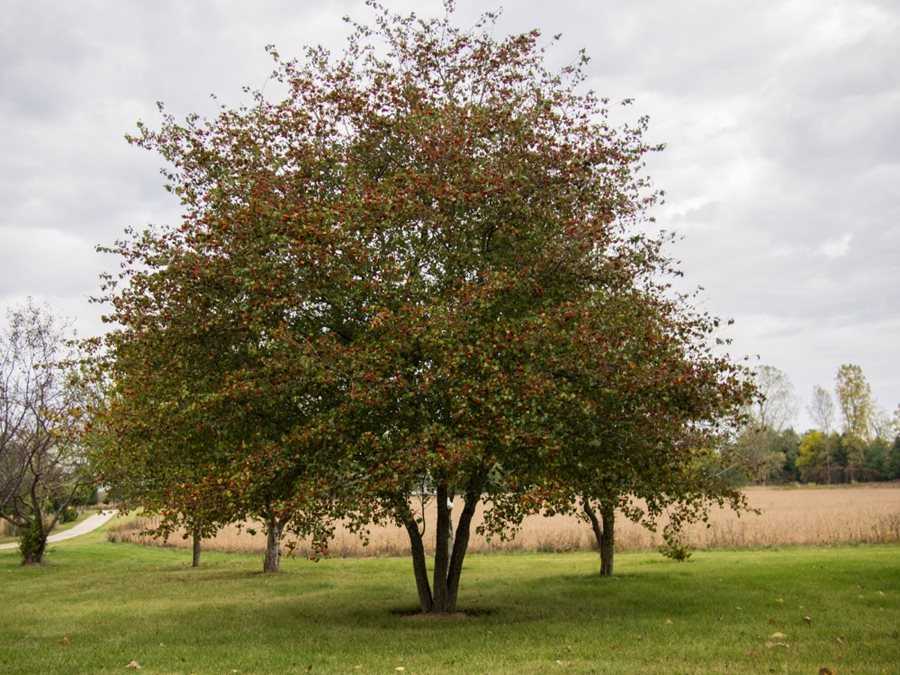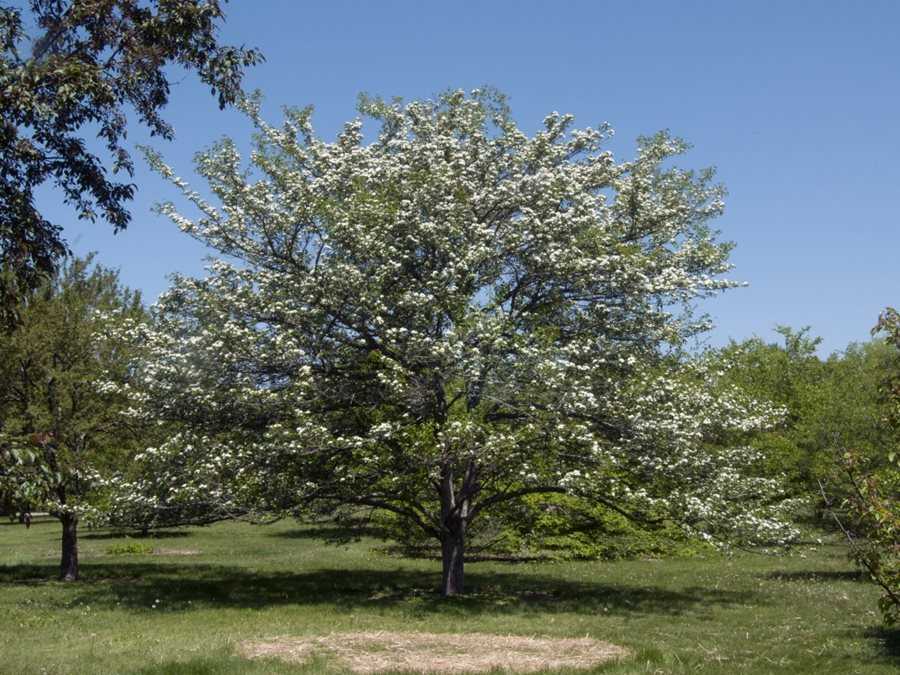- Growing Hawthorn in the Garden
- Choosing the right species
- Planting location
- Soil preparation
- Planting and spacing
- Watering and fertilizing
- Pruning and maintenance
- Pest and disease control
- Harvesting hawthorn berries
- Choosing the Right Hawthorn Species
- Growth Habit
- Hardiness
- Flower and Fruit Characteristics
- Pest and Disease Resistance
- Environmental Adaptability
- Overall Maintenance
- Benefits of Hawthorn for Health
- 1. Heart Health
- 2. Digestive Health
- 3. Antioxidant Properties
- 4. Anxiety and Stress Relief
- 5. Anti-inflammatory Effects
- 6. Immune System Support
- 7. Anti-Aging Effects
- The Medicinal Properties of Hawthorn
- Cardiovascular Health
- Anti-Inflammatory Effects
- Antioxidant Activity
- Digestive Health
- Anxiety and Stress Relief
- How to Use Hawthorn
- Common Uses of Hawthorn in Traditional Medicine
- 1. Heart Health
- 2. Digestive Issues
- 3. Anxiety and Stress
- 4. Antioxidant Properties
- 5. Mental Clarity
- 6. Skin Health
- 7. Menopausal Support
- 8. Immune System Boost
- 9. Weight Management
- Harvesting and Storing Hawthorn Berries
- Harvesting Hawthorn Berries
- Storing Hawthorn Berries
- Freezing Hawthorn Berries
- Using Hawthorn Berries
- Question-answer:
- What are the different species of Hawthorn?
- What are the properties of Hawthorn?
- How can I grow Hawthorn in my garden?
- What are the common uses of Hawthorn?
- Can Hawthorn be used as a decorative plant in the garden?
- Is Hawthorn safe to consume?
- Video: A Simple Way To Root Plants From Cuttings
The hawthorn, also known as the Crataegus, is a beautiful and versatile plant that can be grown in gardens all around the world. With its vibrant flowers, ornamental berries, and thorny branches, the hawthorn adds a touch of elegance to any garden landscape. In addition to its visual appeal, the hawthorn also possesses a range of beneficial properties that make it a valuable addition to any garden.
One of the most notable properties of the hawthorn is its medicinal value. For centuries, the hawthorn has been used in traditional medicine to treat various ailments, including heart problems, digestive issues, and anxiety. Research has shown that the hawthorn contains compounds that have a positive impact on cardiovascular health, such as flavonoids and antioxidants. It is believed that these compounds help improve blood flow and reduce the risk of heart disease.
There are many different species of hawthorn, each with its own unique characteristics and growing requirements. Some common species include the English hawthorn (Crataegus laevigata), the native American hawthorn (Crataegus mollis), and the Chinese hawthorn (Crataegus pinnatifida). Each species has its own preferred climate and soil conditions, so it’s important to choose the right species for your garden.
In conclusion, the hawthorn is a fascinating plant that offers both visual beauty and medicinal benefits. Whether you’re looking to add a splash of color to your garden or harness the healing properties of this plant, the hawthorn is an excellent choice. With its wide range of species and adaptability to different climates, there is sure to be a hawthorn variety that suits your gardening needs.
Growing Hawthorn in the Garden
Hawthorn is a versatile and attractive tree that can be grown in the garden. Here are some important tips to help you successfully grow hawthorn:
Choosing the right species

There are several species of hawthorn to choose from, so it’s important to select the one that best suits your needs. Some common species include:
- Crataegus monogyna: This species is native to Europe and is known for its white flowers and red berries.
- Crataegus laevigata: Also known as the midland hawthorn, this species has white or pink flowers and red berries.
- Crataegus pinnatifida: This species is native to Asia and is commonly cultivated for its medicinal properties.
Planting location

Hawthorn trees prefer full sun, so choose a planting location that receives at least 6 hours of direct sunlight per day. The soil should be well-drained to prevent waterlogging, as hawthorn trees do not tolerate excessive moisture.
Soil preparation
Prepare the soil before planting by digging a hole that is twice as wide and deep as the root ball. Mix in compost or well-rotted manure to improve the soil’s fertility and drainage.
Planting and spacing
Plant the hawthorn tree in the prepared hole, making sure the root ball is level with or slightly above the soil surface. Space multiple hawthorn trees at least 10-15 feet apart to allow for proper air circulation and future growth.
Watering and fertilizing
Water the newly planted hawthorn tree deeply and regularly, especially during dry periods. Once established, hawthorn trees are relatively drought-tolerant. Fertilize with a balanced slow-release fertilizer in the spring to promote healthy growth.
Pruning and maintenance
Prune hawthorn trees in late winter or early spring to remove dead, damaged, or crossing branches. This will help maintain a healthy shape and allow for better air circulation. Mulch around the base of the tree to conserve moisture and suppress weeds.
Pest and disease control
Hawthorn trees are generally resistant to pests and diseases. However, they can occasionally be affected by powdery mildew, aphids, or fire blight. Monitor your tree regularly and take appropriate action if any issues arise.
Harvesting hawthorn berries
If your hawthorn tree produces berries, they can be harvested in the fall when they are fully ripe. Simply remove the berries from the tree and use them to make jams, jellies, or herbal teas.
By following these guidelines, you can successfully grow hawthorn trees in your garden and enjoy their beauty and benefits for years to come.
Choosing the Right Hawthorn Species
When it comes to choosing the right hawthorn species for your garden, there are several factors to consider. Here are some important points to keep in mind:
Growth Habit

Hawthorns come in a variety of growth habits, including small trees, large shrubs, and spreading bushes. Think about the available space in your garden and choose a species that will fit well with the overall design.
Hardiness
Consider the hardiness of different hawthorn species in your climate zone. Some species are more adaptable to colder temperatures, while others thrive in warmer regions. Check with your local nursery or garden center for recommendations.
Flower and Fruit Characteristics
Take into account the desired aesthetic appeal of the hawthorn species. Different species produce flowers and fruits with varying colors and sizes. Some hawthorns have showy blossoms, while others have edible fruits that attract wildlife.
Pest and Disease Resistance
Research the pest and disease resistance of different hawthorn species. Some species are more susceptible to specific pests or diseases, while others have built-in resistance. It is important to choose a species that will thrive in your garden’s conditions with minimal need for intervention.
Environmental Adaptability
Consider the environmental adaptability of hawthorn species. Some species are more tolerant of poor soil conditions, drought, or strong winds. Choose a species that will be able to withstand the specific environmental factors in your garden.
Overall Maintenance
Think about the level of maintenance you are willing to dedicate to your hawthorn species. Some species require more pruning, fertilizing, and general care, while others are low-maintenance. Select a species that aligns with your available time and resources.
| Species | Growth Habit | Hardiness Zone | Flower/Fruit | Pest/Disease Resistance | Environmental Adaptability | Overall Maintenance |
|---|---|---|---|---|---|---|
| Crataegus monogyna | Small tree | 3-7 | White flowers, red fruits | Moderate | Tolerant | Low |
| Crataegus laevigata | Large shrub/small tree | 4-7 | Red/pink flowers, small red fruits | Moderate | Tolerant | Moderate |
| Crataegus pinnatifida | Spreading bush | 3-7 | White flowers, red fruits | High | Tolerant | Low |
Consult the table above for a summary of common hawthorn species and their characteristics. This can help you narrow down your options and choose the right hawthorn species for your garden.
Benefits of Hawthorn for Health
Hawthorn is a medicinal plant that has been used for centuries to promote overall health and well-being. It is known for its numerous health benefits, which include:
1. Heart Health
One of the main benefits of hawthorn is its positive effects on heart health. It has been used traditionally to support cardiovascular function and improve blood circulation. Hawthorn is believed to strengthen the walls of the blood vessels, reduce cholesterol levels, and lower blood pressure. It may also help prevent the formation of blood clots and reduce the risk of heart disease.
2. Digestive Health
Hawthorn has also been used to support digestive health. It is believed to help improve digestion, relieve indigestion, and reduce symptoms of gastrointestinal disorders such as bloating, gas, and stomach pain. Hawthorn may also help regulate bowel movements and improve overall digestive function.
3. Antioxidant Properties
Hawthorn is rich in antioxidants, which are compounds that help protect the body from oxidative stress and damage caused by free radicals. These antioxidants may help reduce inflammation, boost the immune system, and protect against chronic diseases such as cancer and heart disease.
4. Anxiety and Stress Relief
Hawthorn has calming properties and may help reduce anxiety and stress. It can promote relaxation and improve overall mood. Hawthorn may also help regulate the production of stress hormones and improve sleep quality.
5. Anti-inflammatory Effects
Hawthorn has anti-inflammatory properties and may help reduce inflammation in the body. It can be beneficial for conditions such as arthritis, joint pain, and inflammatory skin conditions. Hawthorn may also help reduce swelling and promote faster healing.
6. Immune System Support
Hawthorn has immune-enhancing properties and can help support a healthy immune system. It can strengthen the body’s defenses against infections and viruses. Hawthorn may also help reduce the severity and duration of cold and flu symptoms.
7. Anti-Aging Effects
The antioxidant properties of hawthorn can help protect the skin from the damaging effects of free radicals, which can contribute to premature aging. Regular consumption of hawthorn may help reduce the appearance of wrinkles, fine lines, and age spots, and promote a more youthful complexion.
In conclusion, hawthorn is a versatile plant with numerous health benefits. Whether it’s promoting heart health, supporting digestive function, reducing anxiety, or protecting against chronic diseases, hawthorn can be a valuable addition to your health routine.
The Medicinal Properties of Hawthorn
Hawthorn, also known as Crataegus, is a plant with many medicinal properties. Throughout history, it has been used for various health conditions due to its rich composition of bioactive compounds.
Cardiovascular Health
Hawthorn has been widely studied for its benefits on cardiovascular health. It contains flavonoids and procyanidins, which have antioxidant properties and can help improve blood flow and reduce inflammation. Hawthorn has been shown to reduce blood pressure and cholesterol levels, making it beneficial for managing hypertension and preventing heart disease.
Anti-Inflammatory Effects

The bioactive compounds in hawthorn have anti-inflammatory effects, which can help reduce inflammation in the body. This makes it beneficial for managing conditions such as arthritis and digestive disorders. It may also help enhance immune function and reduce the risk of chronic inflammatory diseases.
Antioxidant Activity
Hawthorn is a rich source of antioxidants, which help protect the body against oxidative stress and damage caused by free radicals. The antioxidants in hawthorn can help prevent cell damage and reduce the risk of chronic diseases such as cancer and heart disease.
Digestive Health
Hawthorn has traditionally been used to support digestive health. It can help improve digestion, relieve symptoms of indigestion, and promote healthy bowel movements. Some studies have also suggested that hawthorn may have a protective effect on the liver and help improve liver function.
Anxiety and Stress Relief
Hawthorn has calming properties and can help relieve anxiety and stress. It has been used in traditional medicine to promote relaxation and improve sleep quality. Hawthorn may also have neuroprotective effects, which can help protect the brain against age-related cognitive decline and improve overall mental well-being.
How to Use Hawthorn
Hawthorn is available in various forms, including capsules, extracts, and teas. It is important to follow the recommended dosage instructions and consult with a healthcare professional before starting any new herbal supplement regimen. Some individuals may experience side effects or interactions with certain medications, so it is important to seek medical advice for personalized guidance.
| Forms of Hawthorn | Recommended Dosage |
|---|---|
| Capsules | 300-600 mg per day |
| Extracts (liquid or tincture) | 20-30 drops, 2-3 times per day |
| Teas | 1-2 teaspoons of dried hawthorn leaves and flowers steeped in hot water for 10-15 minutes, 2-3 times per day |
Overall, hawthorn is a versatile herb with various medicinal properties. It can be a beneficial addition to a healthy lifestyle and may help support cardiovascular health, reduce inflammation, promote digestive health, and provide anxiety and stress relief.
Common Uses of Hawthorn in Traditional Medicine
Hawthorn has been used for centuries in traditional medicine to treat a variety of ailments. Its medicinal properties are primarily derived from its flowers, leaves, and berries. Here are some common uses of hawthorn in traditional medicine:
1. Heart Health
Hawthorn is known for its beneficial effects on the cardiovascular system. It can help improve blood flow, lower blood pressure, and reduce the risk of heart diseases. It is often used to treat conditions such as angina, congestive heart failure, and irregular heartbeat.
2. Digestive Issues
Hawthorn can help alleviate digestive problems such as indigestion, bloating, and diarrhea. It has a calming effect on the digestive system, aiding in the digestion of food and relieving discomfort.
3. Anxiety and Stress
Hawthorn has been used as a natural remedy for anxiety and stress. It can help promote relaxation, reduce nervousness, and improve overall mood. It is often recommended as a natural alternative to prescription medications for anxiety.
4. Antioxidant Properties
The antioxidants present in hawthorn help protect the body against oxidative stress and damage caused by free radicals. This can help prevent cell damage and reduce the risk of chronic diseases such as cancer.
5. Mental Clarity
Hawthorn is believed to improve cognitive function and enhance mental clarity. It can help improve focus, memory, and overall brain health.
6. Skin Health
Hawthorn extracts are often used in skincare products due to their anti-inflammatory and antioxidant properties. They can help soothe skin irritations, reduce redness, and promote a healthy complexion.
7. Menopausal Support
Hawthorn is often used to alleviate symptoms associated with menopause, such as hot flashes and mood swings. It can help balance hormone levels and improve overall well-being during this transitional phase.
8. Immune System Boost
Hawthorn has immune-boosting properties that can help strengthen the body’s natural defense mechanisms. It can help prevent and fight off infections, colds, and flu.
9. Weight Management
Hawthorn is believed to have weight management benefits. It can help boost metabolism, aid in digestion, and promote healthy weight loss.
It is important to note that while hawthorn has many potential benefits, it is always best to consult with a healthcare professional before using it for any medicinal purposes, especially if you are currently taking medication or have an existing medical condition.
Harvesting and Storing Hawthorn Berries
Harvesting and storing hawthorn berries can be a rewarding process that allows you to enjoy the benefits of this versatile fruit throughout the year. Whether you use them for making jam, tea, or as a medicinal herb, proper harvesting and storing techniques are essential to preserve their flavor and potency.
Harvesting Hawthorn Berries
The ideal time to harvest hawthorn berries is in late summer or early autumn when they are fully ripe. Look for berries that are a vibrant red color and are slightly soft to the touch. You can pluck the berries individually or cut the entire cluster using a pair of sharp pruning shears.
It is important to avoid harvesting hawthorn berries that are not fully ripe, as they may not have developed their full flavor or medicinal properties. Additionally, avoid berries that are moldy or have any signs of damage.
Storing Hawthorn Berries
Before storing hawthorn berries, it is important to dry them thoroughly to prevent mold or spoilage. Spread the berries in a single layer on a clean, dry surface, and allow them to air dry for a few days. You can also use a food dehydrator or oven set to a low temperature to speed up the drying process.
Once the berries are dry, store them in airtight containers such as glass jars or plastic bags. Make sure to label the containers with the date of harvest for reference. Store the containers in a cool, dry place away from direct sunlight. Properly stored hawthorn berries can last up to a year.
Freezing Hawthorn Berries
If you prefer to freeze hawthorn berries, start by rinsing them under cold water and removing any stems or leaves. Pat the berries dry and place them in a single layer on a baking sheet lined with parchment paper. Freeze the berries for a few hours until they are firm, and then transfer them to a freezer-safe bag or container. Frozen hawthorn berries can last for up to a year.
Using Hawthorn Berries
Hawthorn berries can be used in a variety of ways. They can be brewed into a tea, used to make jams and jellies, or added to baked goods such as pies and muffins. Additionally, hawthorn berries have long been used in traditional medicine for their various health benefits.
To make hawthorn tea, simply steep a teaspoon of dried or fresh berries in a cup of hot water for 10-15 minutes. Strain the tea and sweeten with honey or another natural sweetener if desired. You can enjoy hawthorn tea hot or cold.
Remember to consult with a healthcare professional before using hawthorn berries for any medicinal purposes, especially if you are taking any medications or have any underlying health conditions.
Question-answer:
What are the different species of Hawthorn?
The different species of Hawthorn include Crataegus monogyna, Crataegus laevigata, Crataegus oxyacantha, Crataegus pinnatifida, Crataegus cuneata, and Crataegus douglasii.
What are the properties of Hawthorn?
Hawthorn has various properties including helping cardiovascular health, reducing anxiety, improving digestion, and boosting the immune system.
How can I grow Hawthorn in my garden?
To grow Hawthorn in your garden, you can start by selecting a suitable location with well-drained soil and full sun. You can then plant the Hawthorn tree or shrub, water it regularly, and provide pruning and maintenance as needed.
What are the common uses of Hawthorn?
Hawthorn is commonly used in herbal medicine to treat heart-related conditions such as high blood pressure and congestive heart failure. It is also used as a natural remedy for anxiety and digestive issues.
Can Hawthorn be used as a decorative plant in the garden?
Yes, Hawthorn can be used as a decorative plant in the garden due to its attractive flowers and berries. It can add beauty and color to any outdoor space.
Is Hawthorn safe to consume?
Hawthorn is generally considered safe to consume, but it is always recommended to consult with a healthcare professional before using it as a herbal remedy, especially if you have any underlying health conditions or are taking medication.







